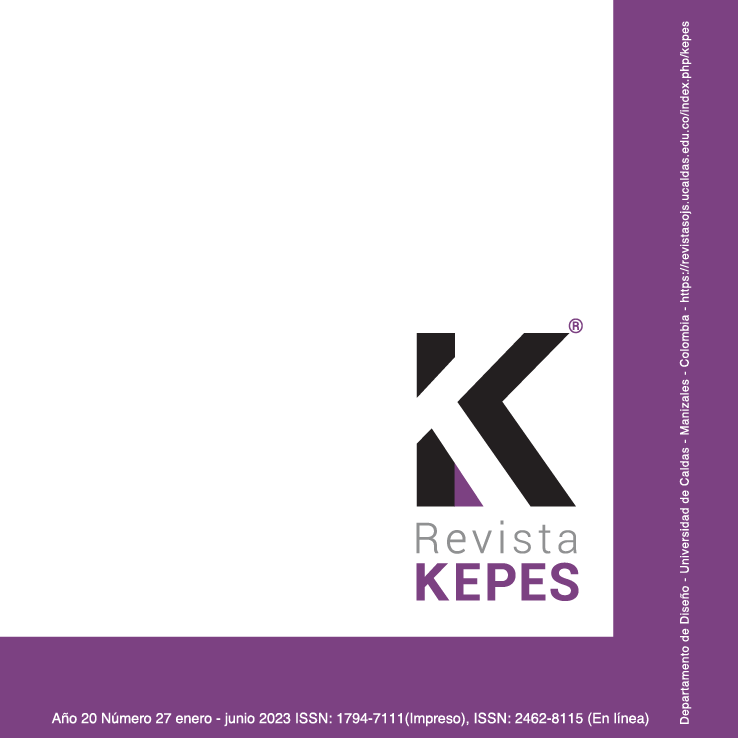Authors
Abstract
The excess of care to provide safe and healthy housing led to the loss of the sense of dwelling, understood as the building that cares for the species on earth and their relationships in the biosphere. To inquire into the ways of recovering the meaning of inhabiting, this article proposes a critical analysis of the meaning to explore the sense of dwelling and caring based on the questioning of today's ways of life from Heidegger's lecture "Building, dwelling, thinking" crossed by the idea of “The Common World” by Marina Garcés and the sense of “Metamorphosis” in Emanuele Coccia. For this reason, a review on the processes of massive post-war housing construction has been carried out as well as an analysis of Heidegger's lecture from the point of view of care, and the exploration of four Latin-American architectural practices that deal with their construction from the recognition of their realities. As a result, it was found that these four practices manage ways of projecting and building architecture committed to the reformulation of institutional practice, welcoming the plurality of knowledge and of the know-how to recover the sense of dwelling from popular communities. An architecture that, from the recognition of the other and the place, builds care in continuity with others and earth ecosystems.
References
AGA ESTUDIO. (2015). La Pantalla: parque comunitario. https://www.aga-estudio.com/lapantalla
Banco Mundial. (2018). Casi la mitad de la población mundial vive con menos de USD 5,50 al día [Comunicado de prensa]. https://www.bancomundial.org/es/news/pressrelease/2018/10/17/nearly-half-the-world-lives-on-less-than-550-a-day
Bauman, Z. (2012). Vida de consumo. Fondo de Cultura Económica.
Besse, J. (2019). Habitar. Luna libros.
Beuf, A. (2012). De las luchas urbanas a las grandes inversiones. La nueva urbanidad periférica en Bogotá. Bulletin de l’Institut français d’études andines, 41(3), 473-501. https://doi.org/10.4000/bifea.344
Boris, B., Butler, J., De Nicola, A., Holmes, B., Kastner, J., Lazzarato, M., Lorey, I., Nowotny, S., Raunig, G., Roggero, G., Sánchez Cedillo, R., Steyerl, H., Vecchi, B. y Von Osten, M. (2008). Producción cultural y prácticas instituyentes: líneas de ruptura en la crítica institucional. Traficantes de Sueños.
Calthorpe, P. (2011). Urbanism in the age of climate change. Island Press.
Camps, V. (2001). Una vida de calidad: reflexiones sobre bioética. Crítica.
Camps, V. (2012) De la buena vida, a la vida buena [Conferencia de inauguración Cursos de Verano UNIA 2012 Sevilla]. Canal Audiovisual UNIA. https://vimeo.com/85424147
Camps, V. (2021). Tiempos de cuidado. Otra forma de estar en el mundo. Arpa.
Coccia, E. (2021). Metamorfosis. Cactus.
Colomina, B. (2019). X-ray Architecture. Lars Müller Publishers.
COONVITE. (2021). Hogares saludables para una ciudad del cuidado. Programa Horagar Saludables - COONVITE.
Debord, G. (2003). La sociedad del espectáculo. Pre-Textos.
Frampton, K. (1981). Historia crítica de la arquitectura moderna. Gustavo Gili.
Garcés, M. (2013). Un mundo común. Bellaterra.
Giglia, A. (2012). El habitar y la cultura. Perspectivas teóricas y de investigación. Anthropos.
Heidegger, M. (1994). Conferencias y artículos. Serbal.
Heidegger, M. (2006). Carta sobre el humanismo. Alianza Editorial.
Jaramillo, J. (2009). Diccionario de antioqueñismos. Universidad EAFIT.
Lehmann, S. (2021). Nature in the Urban Context: Renaturalisation as an Important Dimension of Urban Resilience and Planning. Módulo Arquitectura CUC, 26(1), 161-190. https://doi.org/10.17981/10.17981/mod.arq.cuc.26.1.2021.07
López, J. (2003). La relevancia de la vivienda social en el origen de la arquitectura contemporánea. Espacio Tiempo y Forma. Serie VII, Historia Del Arte, (16). https://doi.org/10.5944/etfvii.16.2003.2405
Machado, M. (2018). Del espaciar del espacio al mediar del medio. De lo funcional hacia lo performativo. HipoTesis Serie Numerada, 6, 101-122. http://hipo-tesis.eu/serienumerada/index.php/ojs/article/view/hipo6machado
Machado, M. (2020). ¿Casa? En S. Padilla (Ed.), Casa. EDUCOSTA.
Martínez i Borrell, C. (1991). Informalismo y poética: hacia una lectura de la arquitectura de Alvar Aalto y de la pintura informal como narrativa [Tesis doctoral]. Universidad Politécnica de Cataluña. https://www.tdx.cat/handle/10803/41557
Montaner, J. (2015). La arquitectura de la vivienda colectiva: políticas y proyectos en la ciudad contemporánea (Vol. 26). Reverté.
Muxí, Z. (2004). La arquitectura de la ciudad global. Gustavo Gili.
Pallasmaa, J. (2016). Habitar. Gustavo Gili.
Preciado, P. (2019). Un apartamento en Urano: crónicas del cruce (Vol. 625). Anagrama.
Quetglas, J. (1994). Habitar. CIRCO. 15. Mansilla, Rojo, Tuñón. Escuela Técnica Superior de Arquitectura. Universidad Politécnica de Madrid.
Roser, M. (2021). Global poverty in an unequal world: Who is considered poor in a rich country? And what does this mean for our understanding of global poverty? Our World in Data. https://ourworldindata.org/higher-poverty-global-line
Suárez, A., Acosta, Á., González, O., Suárez, J. y Orozco, M. (2021). Materia y penumbra: una arquitectura en el desierto. Anales de Investigación en Arquitectura, 11(1). https://doi.org/10.18861/ania.2021.11.1.3059
Vargas Llosa, M. (2012). La civilización del espectáculo. Alfaguara.

 PDF (Español)
PDF (Español)
 FLIP
FLIP






















